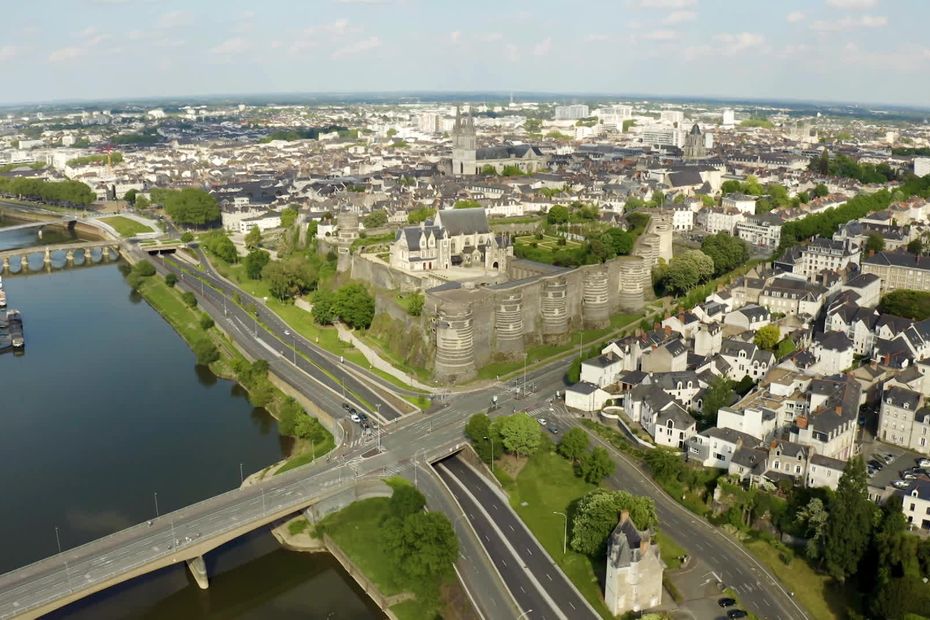While the government is asking all communities to reduce energy consumption in public buildings by 10%, Angers and its metropolis, the stronghold of the Minister for Ecological Transition, want to reduce their bills.
The surge in energy prices, observed by the recovery of the world economy in 2021, and accentuated by the war in Ukraine has a cost and no less important.
For Angers and its urban community, Angers Loire Métropole, the increase in energy bills is substantial:
- from € 7.7 million to € 13.5 million between 2022 and 2023, or + 75% in 1 year
- from 5.9 million euros to 13.5 million euros between 2021 and 2023, or + 128% in 2 years
Faced with this increase, Angers and its metropolis want to accentuate “their efforts to maintain containment in order to maintain a responsible budget trajectory and maintain the quality of public services offered to users of the territory”.
“Among the structural actions foreseen as part of our ecological transition strategy, the city of Angers adopted, in the city council last July, a Building Energy Plan which aims to reduce by 40%, by 2030, the energy consumption of the 450 public buildings owned by the city or urban community. Within this period, 32% of the energy consumed must also be renewable “, Recalls Jean-Marc Verchère, mayor of Angers and president of Angers Loire Métropole.
Under this plan, the provisions relating to the heating of all public installations have been revised downwards. From November 1st, schools and offices will now have to set the thermostat to 19 ° in winter.
“This 1 ° C decrease in heating temperature should allow the community to achieve energy savings of 6 to 7% “underlines Jacques-Olivier Martin, deputy responsible for buildings and streets, city of Angers
From November 1st, schools and offices will now have to set the thermostat to 19 ° in winter. This 1 ° C decrease in heating temperature should allow the community to achieve energy savings of 6 to 7%. The air conditioning, where present, must be activated only from 26 °.
Jacques-Olivier Martin
Deputy Head of Buildings and Roads, City of Angers
–
Swimming pools, mostly tempered by district heating networks. The heat produced comes from wood (between 60% and 85% depending on the network) and supplemented by natural gas.
These infrastructures are therefore less affected by changes in the price of gas. “Since last April, the community has reduced the water temperature of the swimming pools by 1 °, which has allowed it to reduce its energy consumption by 6% “, explains the city
The “Building Energy Plan” has already enabled the community to achieve energy savings of 15%. In November, “the community will launch an awareness campaign for agents occupying public buildings in order to encourage them to adopt virtuous gestures”.
Latest leverage: the Smart Territory strategy, launched in 2019. In the end it should generate € 101.2 million in savings at the agglomeration scale.
The operation provides for an energy saving of 66% expected on public lighting by 2025, throughout the agglomeration, an expected saving in public buildings of 20% in electricity, gas, ventilation and a 30% reduction in water consumption. intended for the irrigation of parks and public gardens.
Work has also been undertaken for more than two years to reduce the energy consumption of lighting. ” Thus, of the 50,000 bulbs currently in service in the area, 30,000 are replaced by LEDs which are much more virtuous because they consume little energy and have a longer life. specify the metropolis.
“Angers Loire Métropole is also working to reduce its carbon footprint. Many projects started show this “ says Corinne Bouchoux, vice president of Metropolis responsible for the ecological transition
Among the projects already carried out: the Petite Vicomté photovoltaic power plant, located in the municipality of Ponts-de-Cé, was born from the conversion of a former waste landfill of about 11 hectares. “The site currently produces 11,000 MWh per year, equivalent to the electricity needs (excluding heating) of approximately 4,000 households.as noted by Franck Poquin, vice president of the Métropole in charge of energy.
The challenge is to contain the long-term surge in energy prices. To achieve this, the community “it capitalizes on the actions already taken and promises new measures”.
Firstly, the closure of the illumination of the facades of the heritage sites from 11 pm (and no longer from 1 am), starting from 1 October.
Two hours of lighting less, for the fifty public sites concerned, this should allow energy savings of 40% in one year
The duration of the Christmas lights will be reduced from 17:00 to 23:00 and no longer from 16:30 to 24:00. 1h30 saved, this should represent 20% of energy savings.
Other courses of action are being studied, such as reducing illuminated ads. All service providers and partners in the city were also invited to participate in this effort to moderate energy consumption.
“Everyone must be actors in this effort of sobriety. We therefore count on the responsibility of traders in this period and invite citizens to make ecological gestures “ concludes Jean-Marc Verchère.
–


